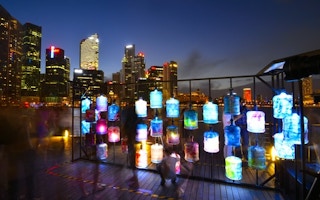An Egyptian inventor has successfully tested a safe electricity system for homes that eliminates the risk of electric shocks and reduces energy consumption significantly.
The inventor, Tarek Shaaban, who is based in France, has tested the system in his four-storey house and is now attempting to scale up his invention, having persuaded a company affiliated with the Ministry of Military Production in Egypt, the Benha Company for Electronic Industries, to evaluate it.
Shaaban was awarded a patent for the Safe Electrical Connection in Buildings system in 2008 by the Egyptian Academy of Scientific Research and Technology.
“
It protects from the dangers of fire and death caused by electric shocks, as it does not pose any risk when the wires touch each other or when they are exposed to water.
Tarek Shaaban, inventor
The invention also won a gold medal at the Geneva International Invention Fair held this year (29 March to 2 April). He told SciDev.Net his invention ‟transforms electricity voltage from 220V to 14V, making it safe and saving money, without sacrificing the quality of lighting”.
It does this by relying on an electromagnetic circuit which reduces resistance to the flow of electric current to the lowest possible level. This then reduces the electricity consumed to the lowest level, saving more than 85 per cent of energy consumption, according to Shaaban.
The system has benefits for safety too. ‟[It] protects from the dangers of fire and death caused by electric shocks, as it does not pose any risk when the wires touch each other or when they are exposed to water,” Shaaban stressed.
Engineer Nader Galal, a member of the Benha Company for Electronic Industries’ team that tested the innovation, told SciDev.Net that the positive results promised when Shaaban applied for evaluation were “100 per cent achieved.”
‟It seemed illogical at first glance, but the practical experiment changed our opinion,” Galal added.
Galal expects the invention to become hugely successful when commercialised. The prospect of reducing electricity consumption makes it particularly important for countries in the region, most of which are experiencing a crisis in energy resources.
The Pan-Arab Strategy for the Development of Renewable Energy Applications has estimated that demand for conventional energy sources in the region will rise at an annual average rate of six per cent between 2010 and 2030. Shaaban is in “negotiations for a partnership with two investors, one from Saudi Arabia and the other from the UAE, to produce the system in large scale”.
But he fears a strong challenge from lighting companies, because the innovation means lighting units would have a longer life.
Work is also underway to develop the system so it can operate devices that require high electrical loads, such as those required by air conditioning units and electric water heaters.
Features of the “Safe Electrical Connection in Buildings” can be viewed on YouTube.
This piece was produced by SciDev.Net’s Middle East & North Africa desk.
This article was originally published on SciDev.Net. Read the original article.










